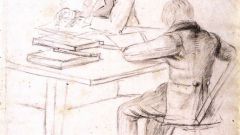You will need
- 1. Pen and paper
- 2. Manual on Russian language
Instruction
1
Find out if in the sentence are homogeneous members. A comma is used between them, if they are not connected Union. She also placed between them, if they are connected by adversative conjunctions "and", "but", "Yes", "however" etc. a comma between the homogeneous members as if they are connected by the repeating unions "and ... and, Yes ..., Yes," "neither ... nor", "or ... or", etc.
2
Check to see if the proposal of separate members. In most cases, isolated common definitions that are defined by words. Isolated also the participial turnovers and single participle denoting an action.
3
In a compound sentence, put a comma, if it is part of linked connective, adversative, separation, connection, explanatory unions. In a compound sentence, a comma to separate the subordinate clause from the main. A dependent clause is separated from the main one comma or by commas on both sides.
4
A comma also in the comparative speed with "as", "what", etc. note that such revolutions are distinguished by commas, but only if refer to the assimilation and no other shades more.
5
Please note that commas are also provided with introductory words and phrases, expressing the attitude of the speaker to what he says. For example, the various feelings of the speaker (luckily, unfortunately, etc.), a higher or lower degree of certainty (certainly, definitely, etc.), order of presentation, communication of thoughts (first, therefore, etc.).
Note
But we will talk about distinguishing punctuation. Where to put a comma and where to put it is not necessary? What are commas and that you need to know to place them correctly, You will learn by viewing this video.
Useful advice
For example, often the spaces are in front of the dot or comma, after the opening quote or before the closing. Often the punctuation is wrong placed or used where not expected. Another important rule for placing punctuation before the closing quotation marks: do not put dot, comma, semicolon and colon. These symbols correctly put after the closing quotation mark.





